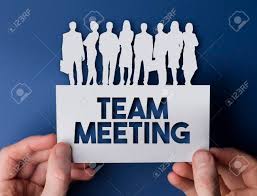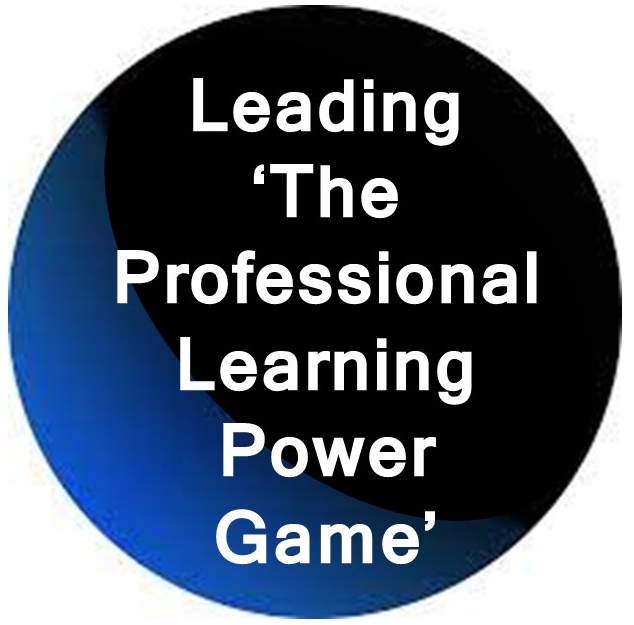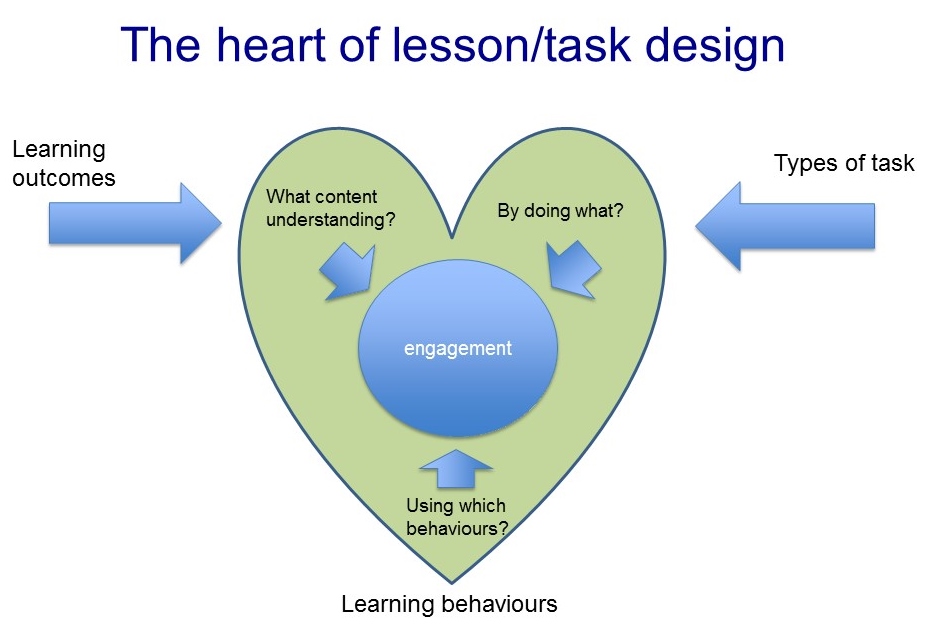Section 1. Overview of Building Better Learners
Building Better Learners is a whole-school programme for all your educational staff, that looks afresh at learning itself from both the learner and teacher perspectives. It aims to enable teachers to learn and work together in the shared endeavour of building their students’ lifelong learning behaviours.
This endeavour isn’t simply a matter of staff reading and absorbing the online ideas, trying out a couple, seeing what happens and wondering whether it worked. It’s a longer, slower, more particular process that relies on a symbiotic relationship between the online material and how this is supported by the school. The programme is:
- reliably guided by research into learning;
- built around three content models;
- structured to support collaborative staff learning taking hold in the classroom;
- evidenced in the tangibly improving student learning behaviours charts.
It offers a timely big ambition of enabling your students to become better lifelong learners; better prepared for an uncertain future.
Explore the big ideas that have shaped the what and how of the programme below and see more detail on the content of each phase of the programme in Sections 4 and 5.
You are now in section 1. Overview of Building Better Learners
Use the navigation bar to move between sections.
Building Better Learners is a blended learning programme that aims to help teachers discover their students’ learning behaviours and use that knowledge to fashion their classroom culture and teaching methodologies to ensure students, knowingly, become better learners.
1.1 The foundations of the programme
Three models underpin the whole programme.
- The Supple Learning Mind: the ‘Brain diagram’ describes the capacities that make up an individual student’s character as a learner
- The Phases of Learning Growth describe the extent to which an individual learner uses each of their learning capacities,
- The Teachers’ Palette describes four aspects of how a teacher creates a classroom culture in which learning will flourish.
These three models capture the What, the How well, and the How do we achieve it, of building better learners. They are described briefly below, and explained in more detail in Section 4.
Underpinning all of this is the idea that students who understand themselves as learners will become better learners faster and more readily.
Model 1. Learn more about the Supple Learning Mind framework
Model 1. The Supple Learning Mind framework of high-value learning behaviours
A rich framework for learning
The Supple Learning Mind framework has four parts, embracing four domains of learning:
- The Emotional domain of learning (sometimes called Resilience)
- The Cognitive domain of learning (sometimes called Resourcefulness)
- The Social domain of learning (sometimes called Reciprocity)
- The Strategic domain of learning (sometimes called Reflectiveness)
This learning framework includes how we feel, how we think, how we learn with others and how we manage the process of learning. It provides a language that both helps teachers to think about how they cultivate each of the learning behaviours, and students to understand of how they can become more effective learners inside and beyond the classroom.
Each domain clusters together for or five high value learning behaviours. For example the social domain is made up of the learning behaviours of interdependence, collaboration, listening and empathy and imitation.
(The Supple Learning Mind framework was originally conceived and researched by Professor Guy Claxton, to capture the key psychological characteristics that enable people to learn and thrive in a complex world. These capacities are inherent in us all. They can be developed regardless of ‘ability’, social background or age.)
Model 2 Learn more about the Learning Growth Phases
Model 2. The Phases of Learning Growth
The whole point of building learning powers is to do just that, to build the learning behaviours, not simply to name them. The diagram alongside – Learning: Poles Apart – shows a start and finish of a journey to build students’ emotional, thinking, social learning habits plus their ability to manage the process of their learning.
Our understanding of what the journey might look like in practice has developed over the past seven years based on the stages of a journey ‘borrowed’ from Bloom’s taxonomy of the affective domain of learning. It is this scaling of the learning dispositions that increases teachers’ confidence and focuses their influence over time.

We’ve borrowed ideas from Benjamin Bloom’s Taxonomy of Objectives of the Affective Domain to generate a very condensed version of the five main phases of growth, namely:
Receiving. (purple)..which involves giving attention to something; becoming aware, not avoiding or rejecting it; being alert to something.
Responding. (blue)…which involves going beyond merely attending to actively attending; complying; taking more responsibility for and enjoyment in initiating action.
Valuing. (green)..which involves accepting the worth of something; preferring something; being committed to the value of something.
Organisation.(yellow)..which involves adding to, formulating and organising their values into how they live their life.
Embodies. (Characterisation in the original)(orange)…which involves behaving consistently in accordance with their values, living what they stand for.
We have simplified and applied these highbrow ideas to the affective development (emotional) of learning behaviours. We’ve also added a negative phase labelled Lacks where learners are unaware, show no interest in, avoid, or reject the learning behaviour.
Take a look at the phases shown above, but start at the bottom and work up.
We urge you to see this progression as long term.
Some phases may take years for people to work through.
Some will never be worked through or achieved.
None of the phases are inevitable.
There is a lifetime of development captured here.
Nevertheless your role as a teacher or parent should surely be to encourage and enable this journey.
It’s worth getting your head around the outline of these phases of development. They apply to any of the learning behaviours as we show in the toggle boxes as you scroll down.
Model 3. Learn more about the Teachers' Palette framework
Model 3. The Teachers’ Palette: learning-friendly strategies
As a teacher you can build young people’s learning power by helping them to expand their own learning capacities. This involves the ways in which you relate to students, talk to students, organise your classroom, and design activities, as well as what you notice and celebrate about learning
Making learning power work involves transforming the culture of the classroom. A common language for learning is adopted; staff shift responsibility for learning to students and model learning by sharing their own difficulties, frustrations and triumphs; students come to understand themselves as growing learners and consciously improve their learning habits; teachers assume the role of learning-power coach, offering students interesting, real and challenging activities to enable them to create their own knowledge and stretch their learning habits. Underpinning this is the obvious reality that students will only change their behaviours once their teachers have changed theirs’.

The culture of the classroom is determined by how teachers are, the relationships that exist between the teacher and the learners, the ways in which the teacher talks and what the teacher talks about, the extent to which teaching is designed to ensure both content acquisition and the development of learning behaviours, and the often subliminal messages about what the teacher really thinks is important.
These 4 aspects of culture – Relating, Talking, Constructing and Celebrating – form the basis of The Teachers’ Palette, the second of two key models in Building Learning Power.
Principles of effective professional development help structure the programme
While the online content of the programme provides teachers with the research and classroom ideas that work the ideas alone can’t bring about change in classrooms. There’s a long road between teachers ‘knowing’, teachers ‘doing’ and teachers ‘doing things differently’ which this programme is designed to support.
Teachers need support to ensure these ideas take root in classrooms so, our use of Professional Learning Teams, based on the work of Dylan Wiliam, is built into the very structure of the programme.
The programme is a careful blend of learning:
- online learning units that… are available at any time, faithfully present researched content, are broken into manageable chunks and encourage the use of prior knowledge;
- professional learning team sessions that……are strategically placed throughout the programme, provide a structured agenda to ensure effective meetings, offer social support with prompts for setting and agreeing learning goals, work as a forum for affirming and reinforcing progress;
- trying things out in classrooms where…teachers follow their plans and monitor their actions because “learning by doing” is integral to the development of expertise and expertise needs ample opportunities for practice, reflection, and adjustment.
This trio of learning opportunities work together to help teachers replace long-standing habituated practices with more effective ones.
1.2 What TLO provides
On-line programme for all teachers
The core component of Building Better Learners is an online programme designed to help teachers develop their understanding and use of Building Learning Power. The programme is presented in two phases, Playing the Learning Power Game (Phase 1) and The Professional Learning Power Game (Phase 2).
Each phase consists of a number of course units. These are intended to feed into a regular cycle of collaborative staff development by what we call professional learning teams. Each unit corresponds to either one or two meeting cycles.
The units in Phase 1 are designed to be taken in sequence. In Phase 2, the units are independent of each other and may be taken in any order.
The units are intended as live resources for teachers — individually, or perhaps as professional learning teams — to revisit and refer to throughout a school’s participation. Teachers have access to all the Phase 1 units for the full duration of the school’s involvement, and to Phase 2 units from the time that the school decides to make them available.
Online resources for school leaders
Each phase has an accompanying unit aimed at guiding school leaders in implementing the programme across the school:
- Leading Playing the Learning Power Game, for Phase 1; and
- Leading the Professional Learning Power Game, for Phase 2
Resources and live support for launching the programme
As preparation for the course, and indeed the whole programme, there is a choice of three ways of launching it.
- ‘Do It Yourself’: In school launch led by senior leaders using the comprehensive launch-related resources provided within Leading the Learning Power Game.
- ‘Zoom-assisted’ launch: this includes a small number of live virtual consultancy and training sessions, for both leadership staff and general teaching staff. Sessions are typically scheduled to last 75–90 minutes.
- In-school launch by TLO trainers, typically a full school-closure day.
Optional additional resources and live support for the programme
Both phases of the core programme can be optionally augmented by further live virtual consultancy sessions, typically scheduled to last 75–90 minutes, and with associated resources. See section 2 for details.
Other items that may be helpful include the online BLP Activity Banks; the downloadable Learning Habits at a Glance cards; books and classroom posters. Information about all these can be found in the Publications section of the BLP website. As a client for the Building Better Learners programme you are entitled to a 20% discount on the website prices.
In particular, a standard but optional starter pack of printed publications — books, posters, etc. — is offered with Phase 1 of Building Better Learners.

1.3 Phase 1. Playing the Learning Power Game: a tight focused start
The programme introduces the holistic ideas of learning power and helps teachers adapt their classroom culture and lesson design in order to grow positive dispositions in four foundational learning behaviours: Perseverance, Questioning, Collaboration and Revising.
Five important features of Phase 1;
1. Phase 1 puts students’ learning behaviours (not attainment) front and centre in the school’s approach to improving learning, enabling teachers to become familiar with the underlying concepts of Learning Power. They gain insights into the 3 models of learning power – the strength and range of their students’ learning behaviours and the classroom culture that supports the growth of those learning behaviours – and record their students’ current learning behaviours. These student learning profiles offer teachers some of the most influential data they’ve ever had to shape their classroom practice.
2. To avoid overload and confusion the Phase 1 programme concentrates on developing the four foundational learning behaviours, one from each of the four domains of learning. Perseverance from the emotional domain, questioning from the cognitive domain, collaboration from the social domain and revising from the strategic domain of learning.
3. Phase 1 has four units and a suggested timetable for how these might be structured across a year. i.e.
- Unit 1 two months, covers understanding and capturing students’ learning profiles, with one learning team meeting;
- Unit 2 three months, covers the development of the learning culture, with two learning team meetings;
- Unit 3 three months, covers the design of learning powered lessons, with two learning team meetings;
- Unit 4 two months, encourages teachers to branch out and introduce more learning behaviours , with two learning team meetings.
4. The units contain rich catalogues of activities matched to levels of learner development. This means that teachers can use their interventions more carefully and raise students’ awareness of how they can take control and build their learning behaviours. It’s students’ learning profiles that guide teachers in designing their classroom culture. These rich catalogues are treasure troves that will see teachers returning to them again and again in years to come.
5. Towards the end of the phase Unit 4 encourages teachers to branch out and play with a couple of the next 8 behaviours shown in their student’s learning profiles. This will give teachers a feel for using other learning behaviours in preparation for Phase 2 of the programme and is so rich in content it could well run into year 2.
And when you’re ready to move on…
1.4 Phase 2. The Professional Learning Power Game: gradually broadening the impact
Having worked on introducing students to the foundational four learning behaviours, Phase 2 enables teachers to extend their classroom practice by working more deeply with a further 8 learning behaviours. Each of the twelve units contain more extensive descriptions of the behaviours themselves together with a rich bank of activities. The phase looks to marry curriculum design and the development of more sophisticated nuanced learning behaviours.
Four important features of Phase 2
1. It builds on data about students’ learning characteristics. You begin to see and record your students’ growth.
2. The materials in Phase 2 move beyond the experimental stage helping teachers to broaden and improve their skills. It offers a profile for teachers’ development so enabling them to manage their own journey.
3. It is infinitely flexible and the school chooses its own route. The twelve learning behaviour modules can be considered in any order, by anyone, to meet the needs of the school. You can go as quickly or a slowly as you want but to help you engage purposefully the online material will remain available to you for at least two years.
4. It is deeper, wider and even more fascinating than Phase 1. Of the thirteen units, four will deepen the four behaviours already introduced in Phase 1, while eight units will deepen the learning powers that were not considered in Phase 1. A further unit offers tools to review and evaluate progress in terms of classroom culture and student learning behaviours.
Each unit has a Professional Learning Team agenda to ensure staff continue to benefit from learning together.
You are now in section 1. Overview of Building Better Learners
Use the navigation bar to move to other sections

![BLP_Brain_Generic_no-Rs-[Converted]](https://www.buildinglearningpower.com/wp-content/uploads/2016/12/BLP_Brain_Generic_no-Rs-Converted-300x216.png)













Comments are closed.